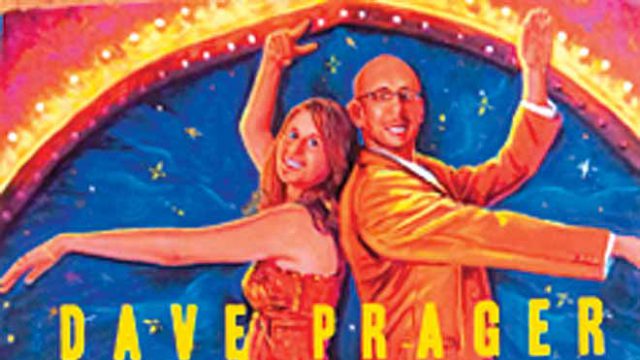Foreigners react to touch-down at T3 in several ways. Some go into near-anaphylactic shock at sight, sound and smell and cling to a cushioned, sterile environment through the years of the ‘hardship posting’. Others are hit by instantly tingling ‘chakras’, an ‘Indian head-bob’ and a distaste for bathing — maladies that persist as long as they are on Indian soil.
But it’s entirely safe to read American adman Dave Prager’s Delirious Delhi. Prager is neither a lungi-and-rubber-chappal ‘traveller’ convinced he is ‘blending in’, nor a diplomat swilling martinis served by liveried Indian staff. Instead, Delirious Delhi is a straight representation of urban, middle-class India, as seen by Prager, who lived as an urban middle-class Dilliwalla for eighteen months.
The Pragers buy milk from the local market, make the commute to work on roads that are clogged like a “bacon-lover’s artery”, experience the dynamics of sharing landings with Indians in an apartment building in Hauz Khas and are experts at reading autorickshaw-driver psychology. Their Delhi is Gurgaon, Karol Bagh and DLF Cyber City, one of istriwallahs, the kabadi man, eccentric aunties and intolerant Resident Welfare Associations.
The book is also about the work-a-day India of shared tiffin boxes. It’s about greedy meals at Saravana Bhavan and Def Col market and it’s about the best and last kababchis on both sides of Delhi Gate.
It’s not always flattering, but Prager’s book, essentially steeped in a delirious love for saddi Dilli, is pretty much the Full Monty on middle-class, urban India. Disappointed perhaps at the slow disappearance of exoticism in India’s big cities, most foreigners tend to distrust urban India, and bemoan the loss of a spiritually-motivated austerity that their own societies left behind centuries ago.
The Pragers’ is the middle path, a pragmatic approach to many baffling things—India’s faiths, its poverty, nukes and malls — in short, all those ‘contradictions’ that God and His Foreign-Writer-Uncle have hacked since centuries.
There are few, relatively unimportant lapses. Like Prager’s wondering about Delhi’s lack of a coffee-house culture (his Indian friends were obviously not born when the vadas sizzled at CP’s legendary India Coffee House), his sighting ‘orchids’ in Gulmohar Park (Pradip Krishen, the last word on Delhi’s trees, confirmed to this critic that none grow anywhere in Delhi); his peculiar desire to see shops and cinemas in Lutyens’ Delhi which he calls “the most unwalkable landscape in the world” (ah, but you have never crushed neem and jamun under your feet in the Lutyens’ monsoon, so what would you know…), Gurgaon’s tall buildings being ‘DLF’s vision of America’ (are there high-rises only in America? And why, then, does Prager elsewhere advocate ‘growing upward’ in ‘low-rise’ Delhi?); the sweeping statement that “Delhi has no unifying story, it is a blank slate” although this city was built by refugees who share the very bloody slate of Partition, further scrawled upon for six decades by Indians from across the country.
But there are passages of great sensitivity and superb writing. The couple’s insightful understanding of why rural Indians visiting Delhi want to take pictures with them and never mind being clicked themselves, and Prager’s amusing and spot-on understanding of ‘jugaad’.
Perhaps it takes a quirky Jewish consciousness to intuitively understand the equally quirky world of Hinduism. Prager not only treads the iffy path of ‘interpreting’ Hinduism but strides it well. “… in the West, religion rarely extended beyond four stained-glass walls. In India, religion is everywhere…it’s behind cash registers…it’s in idols Velcro-ed to taxicab dashboards…So Hinduism is what a Hindu says it is…not a single religion with a billion adherents, but a unifying label for the billion different ways…[to]… express their spirituality,” he writes.
Foreigners who intend to spend time in urban India by working and living alongside and not above Indians, will be grateful for Dave Prager’s book. And Indians looking for an insightful firang take on India will be relieved to find that while Dave Prager’s stomach may have rumbled insatiably for Indian food, his chakras didn’t itch even once.




